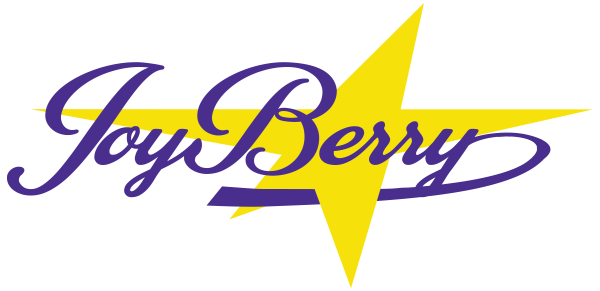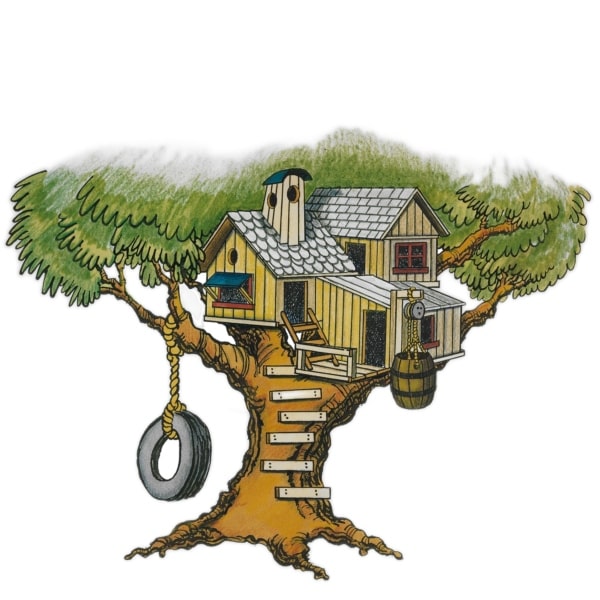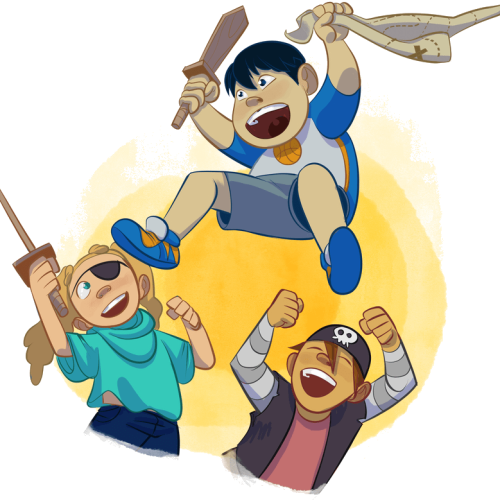The Official Joy Berry Website
Helping Kids Help Themselves
become responsible, happy, and successful
Menu
Menu
The Official Joy Berry Website > Blog > Living Skills > The Origin And Success of Living Skills and Social Emotional Learning Materials
The Origin And Success of Living Skills and Social Emotional Learning Materials
by Joy Berry
on October 7, 2023
The ten-year-old star of my recreation program was a puzzle to me and a problem to his parents. Guy had failed two grades in school and was threatened with expulsion when his exasperated mother called on me for help. I visited Guy at his home and was treated to a backyard spectacle. A three-storied treehouse had been expertly constructed high in the boughs of several avocado trees. The structure had running water, electricity, a small refrigerator, a rope-and-pulley elevator, a thatched roof, and windows with glass in them. I was amazed to learn that the treehouse was a product of Guy’s own imagination and ingenuity.
This young entrepreneur had convinced the neighborhood children to earn their membership in the tree-house club by selling avocados from the backyard trees. Guy had kept careful accounting and organized on-going fund-raisers, which benefited the tree-house club and added to its structure.
Overwhelmed by the size and scope of Guy’s backyard project, I asked him, “What do you think you do well?”
Crestfallen, Guy answered, “Nothing. I’m not good at sports, I can’t draw or sing, and you know how I’m doing in school.” Guy paused for a moment then looked directly into my eyes. “Is that why you came to see me? He asked. “Are you disappointed in me too?”
I was devastated by Guy’s response. Here was a boy who viewed himself as a failure in spite of his obvious accomplishments. I vowed then and there to modify my conventional perceptions about children as well as my traditional approach to working with them.
Together, Guy and I organized and taught the first classes offered in a supplementary program that I continued to expand and direct. The unique classes were designed to teach children the Living Skills they need to become responsible and because no Living Skills educational materials existed at the time, I created them.
Eleven years later, I began converting the classroom materials I created into a comprehensive collection of Living Skills and SEL self-help books for kids with ancillary products. It took an additional twelve years to complete that task.
Once the books were in the marketplace, they sold over 85 million copies and, along the way, earned me the title of “The Inventor of Self-Help Books for Kids.”
Reasons For The Success Of Living Skills And Social Emotional Learning Materials
The success of the Living Skills and Social Emotional Learning (SEL) materials throughout the years has been due to many factors, including, but not limited to, the fact that they were created in response to the condition and needs of a well-defined marketing niche.
Success Due to the Nature and Needs of Parents
The success of Living Skills and Social Emotional Learning (SEL) materials is due in part to the to the nature and needs of parents which includes:
1. Parental Fears: the materials help alleviate parental fears by making the survival and well-being of their children attainable goals.
2. Parent Guilt: the materials assuage parental guilt by supplementing the limited amount of time and effort parents have to give with materials that can help fulfill the child-rearing duties related to raising responsible kids.
3. Parental Burden: the materials remove the burden of responsibility parents feel for their children’s happiness and success by holding children, rather than their parents, responsible for their own lives.
4. Parental Aspirations: the materials help fulfill parents’ hopes and dreams regarding their children’s accomplishments by giving children the information and skills they need to achieve their full potential.
5. Parental Expectations: The materials help children fulfill their parents’ expectations by giving children the information and skills they need to do what is asked of them.
6. Parent/Child Relationships: The materials help eliminate negative parent/child exchanges by providing materials that do the “lecturing” usually relegated to parents.
Success Due to the Nature and Needs of Children
The success of Living Skills and SEL materials is due in part to the to the nature and needs of children which includes:
1. Childhood Resistance: the materials help overcome a child’s normal resistance to information their parents want them to know because in their struggle for independence, children tend to respond better to information and guidance that comes from sources other than their parents.
2. Childhood Needs to Survive and Grow: the materials provide vital information that is essential to every child’s survival and growth.
3. Childhood Desire for Control: since the amount of control a person attains is proportionate to the amount of responsibility he or she assumes, the materials help children gain the control they want to have over their own lives by helping them to become responsible.
4. Childhood Desire to Please: the materials give children the information and skills they need to gain the approval they desire by fulfilling reasonable expectations.
5. Childhood Development: the materials coincide with the developmental stages of children who are progressing at a normal rate in a normal way toward maturity and self-actualization.
6. The Universality of Childhood Experiences: the materials address the universal issues that all children experience at one time or another during childhood.
Success Due to the Nature and Needs of the Adults Who Surround Children
The success of Livings Skill and SEL materials is due in part to the nature and needs of adults who surround children (i.e., teachers, counselors, librarians, etc.) which includes:
1. Adult Effectiveness: the materials help adults overcome the obstacles that often inhibit the effectiveness of their work with children. Many times, the problems that keep children from learning and performing adequately are eliminated with the acquisition of Living Skills. Also, the negative social interactions that can distract children from learning and performing adequately can be more easily resolved when children have the Living Skills to do so.
2. Adult/Child Communications: the materials enhance adult/child communications by providing adults with the vocabulary and dialogue that can help them explain, simply and clearly, complex subjects to children. These simple clear explanations make it more possible for children to integrate vital information into their thinking and daily lives.
Success Due to the Nature of the Materials
The success of Living Skills and SEL materials is due in part to the to the nature of the materials which includes:
1. Universal Quality: the materials are universal in that they deal with subjects that are relevant to every child.
2. Evergreen Quality: the materials are evergreen in that they never go out of style because the subject matter never goes out of style.
3. Relevant Subjects: the materials deal with subjects of most concern to parents and their children. These subjects include the child’s survival, health and well-being, self-esteem, social skills, happiness, and success.
4. Renewable Constituency: the constituency that uses the materials is renewable in that new end-users are being born every day. This condition will continue for as long as the human population exists.
5. Effectiveness of the Materials: Whenever the materials are used appropriately, they can modify a child’s attitudes and behavior in a positive and permanent way.
6. Originality of the Materials: The materials are the only comprehensive, birth through adolescent collection of Living Skills and SEL materials in existence. As such, they have no equal nor do they have any real competition.
Success Due to the Nature of the Juvenile Publishing Industry
The success of Living Skill and SEL materials is due in part to the nature of the Juvenile Publishing Industry that includes:
1. Juvenile Publishing Industry: the Juvenile Publishing Industry is one of the strongest growth segments of the publishing industry.
2. Juvenile Educational Products: juvenile products sell consistently well. In addition, there is only a minimal negative impact on sales due to economic periods of inflation and/or recession because juvenile books (especially self-help books) are considered to be childhood essentials.
The Successful Use Of Self-help Books For Kids
The complete success of Living Skills and SEL materials is contingent on educating parents and teachers about the need for, and proper use of, the Living Skills and Social Emotional (SEL) self-help books for kids.
General Guidelines for the Successful Use of Self-Help Books for Kids
To derive the maximum benefits from self-help books for kids, it is recommended that an adult:
1. Read the self-help books before presenting them to the child so the adult will be prepared to deal with any questions or comments that the child might have.
2. Introduce the self-help books one subject at a time.
3. Introduce a subject at a time the child will be receptive to it.
4. Discuss the subject with the child before presenting the self-help book.
5. Relate the subject to a recent experience or concern of the child’s.
6. Present the self-help books at a pace that is comfortable for the child. Depending on the child’s interest, it might be necessary to go through a self-help book a few pages at a time.
7. Praise children when they follow any advice put forth in a self-help book.
8. Use a self-help book as a reference whenever the need arises.
It is recommended that the adult:
1. Avoid using self-help books when the child feels stressed, overtired, or in a bad mood.
2. Avoid using self-help books as a punishment or negative consequence for the child’s misbehavior.
If the child is resistant to a particular self-help book, it is recommended that the adult:
1. Recruit another person, such as a relative, babysitter, or teacher to present the self-help book.
2. Offer the child a reward in exchange for using a self-help book. For example, postpone bedtime while the book is being used, or allow the child to do a special activity after he or she finishes the book.
3. Use a motivational chart to inspire the child to use the self-help books. Offer a reward for completing the chart.
Specific Guidelines for the Successful Use of Self-Help Books for 1 – 3-Year-Olds.
In order to derive the maximum benefits from self-help books for very young children it is recommended that adults use the books in the following ways:
Age 0 through 1 – Parent Resource: The adult reads the books for information, insights, and encouragement.
Age 1 through 2 – Picture Book: The adult encourages the child to look at the illustrations and participate in a spontaneous discussion of the pictures.
Age 2 through 3 – Read-Aloud Book: The adult reads the text to the child. Then he or she asks questions and acknowledges the child’s responses.
Age 2 through 4 – Independent Activity: The adult encourages the child to use the book independently.
Specific Guidelines for the Successful Use of Self-Help Books with 3 – 6-Year-Olds
In order to derive the maximum benefits from self-help books for young children it is recommended that adults use the books in the following ways:
Phase One Adult Resource: The adult reads the books for information, insights, and encouragement.
Phase Two Adult-Child Activity: The adult uses the books with the child and encourages the child to question or comment on the subject matter.
Phase Three Independent Activity: The child is encouraged to use the books independently of the adult for entertainment and to reinforce the subject matter.
Phase Four Reference Material: The books are placed in the child’s library along with other books and used whenever specific situations need to be addressed.
Specific Guidelines for the Successful Use of Self-Help Books for 6 – 11-Year-Olds.
In order to derive the maximum benefits from self-help books for older children it is recommended that adults use the books in the following ways:
Phase One Adult Resource: The adult reads the books for information, insights, and encouragement.
Phase Two Adult-Child Activity: The adult uses the books with the child and encourages the child to question or comment on the subject matter.
Phase Three Independent Activity: The child is encouraged to use the books independently of the adult for entertainment and to reinforce the subject matter.
Phase Four Reference Material: The books are placed in the child’s library along with other books and used whenever specific situations need to be addressed.
To ensure the success of the self-help books for older children it is recommended that the “show-me-how-then-let-me-do-it” teaching method be used.
Step One The adult demonstrates how the task should be done by doing it while the child watches.
Step Two The adult does the task with the child or watches while the child does the task. (The adult should avoid criticizing, and instead should praise anything the child does correctly.)
Step Three The adult allows the child to do the task alone.
Step Four The adult praises the work and expresses appreciation for what the child has done.
Conclusion
For the best-selling, most effective Living Skills and SEL educational materials available for parents and teachers, go to www.joyberryenterprises.com

Menu
Copyright © 2024 Joy Berry Enterprises. All Rights Reserved.




Leave a reply